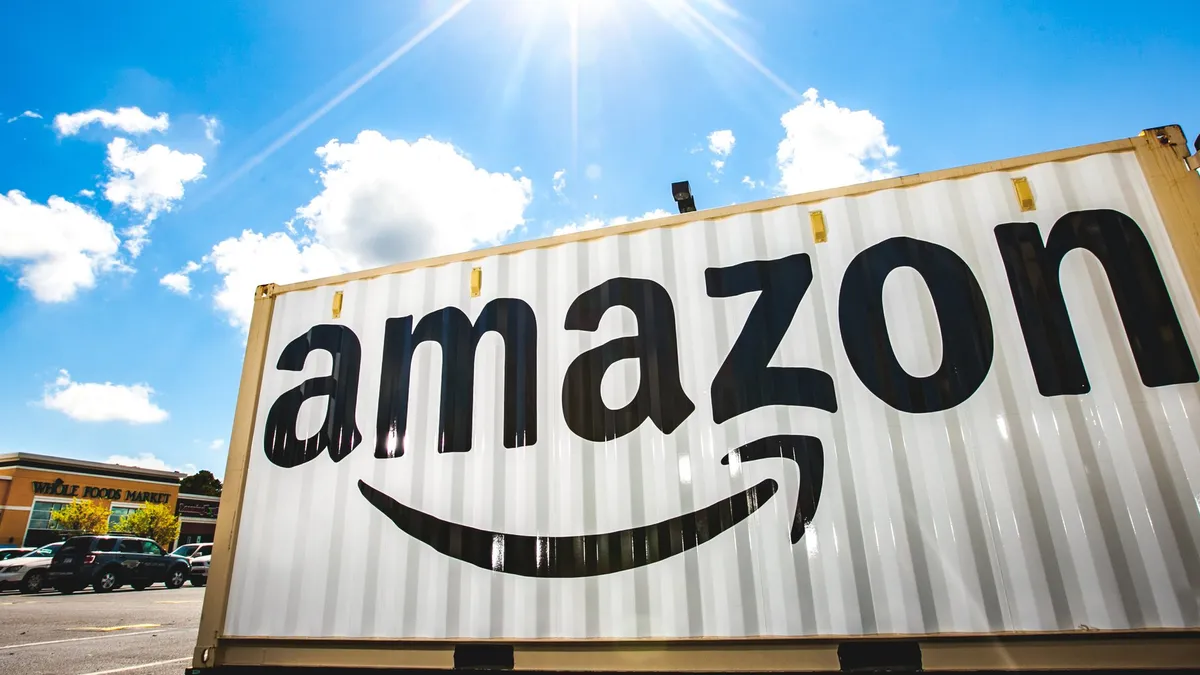Dive Brief:
- Amazon is testing clean room data technology that may help advertisers improve campaign measurement, AdExchanger reported, citing people familiar with the product. Clean rooms give marketers greater access to audience information under strict controls that maintain consumer data privacy.
- The clean room reportedly is similar to other offerings, such as Google's Ads Data Hub (ADH) or Facebook's enterprise data-sharing service. Their clean rooms mix aggregated user information with first-party customer data from marketers, helping them to measure campaigns and avoid serving too many ads to the same audiences.
- Amazon's technology is in a closed beta test with an expected launch or open beta by early next year, per AdExchanger.
Dive Insight:
Amazon's test of a data clean room may help to give advertisers deeper insights into their campaigns as the e-commerce platform grows into the third-biggest digital ad platform. While Amazon is protective of its vast trove of consumers' data, which includes their shopping histories and media consumption habits on its various streaming platforms, the clean room news points to how the company's offerings look increasingly similar to other major digital platforms like Facebook and Google as it expands beyond e-commerce. Amazon's evolution means marketers need to reconsider their relationship with the company.
"While many think of Amazon as a retail disruptor and giant, this move from Amazon demonstrates that brands need to look at Amazon not as the enemy, but as the technology giant they are," said George Popstefanov, founder and CEO of PMG, in comments emailed to Marketing Dive. "Much of Amazon's revenue comes from AWS, which allows them to access massive amounts of data. This new service from Amazon will offer great advertising opportunities for brands and retailers who can make use of Amazon's insights into purchase behavior and preferences. Knowing this, brands should instead consider Amazon a partner, not a competitor."
Advertisers are seeking more granular data about audiences to eliminate wasteful media spending, but privacy laws in regions like the European Union have compelled every company that collects consumer information to be more guarded about their data-sharing practices.
Consumer-packaged goods giant Unilever is developing a data clean room to minimize ad spending that reaches the same consumers on Google, Facebook and Twitter, Digiday reported. Data from those platforms will go to neutral parties such as measurement firms Kantar and Nielsen that aggregate and anonymize the information.
Many CPG and household product brands have resisted advertising on Amazon because of difficulties in forecasting lifetime value (LTV) scores and measuring the number of placements needed to convert shoppers, an agency executive told AdExchanger. The clean room provides data for cohorts of at least 50 consumers sharing a specific attribute, helping to identify which groups have engaged with a campaign. For example, advertisers could determine whether a campaign generates a response of demographic groups such as men 18 to 35 who live in urban areas. By preserving a timeline of campaigns on Amazon, the clean room could help to sort out first-time buyers of a product from people who have already purchased.
Giving advertisers greater access to data in a protected clean room setting can build upon Amazon's ability to reach consumers when they're poised to make a purchase. Almost half (47%) of U.S. internet users start product searches on Amazon, compared with 35% who went to Google first, per a consumer survey by retailing tech firm Adeptmind. This points to Amazon's heft as a powerful advertising channel.
Advertisers are taking notice of Amazon, as spending on e-commerce channel ads surged 66% in Q2 from a year earlier, digital ad platform Kenshoo found. Amazon's top-of-search ads, which appear in search results for products, drove 3% of its ad impressions but 35% of clicks and 45% of spend during Q2, per a report by media agency Merkle. The firm found that product sales attributed to Amazon's Sponsored Product ads more than doubled (up 102%) in Q2 from a year earlier, outpacing the 53% gains for its Sponsored Brand ads.













